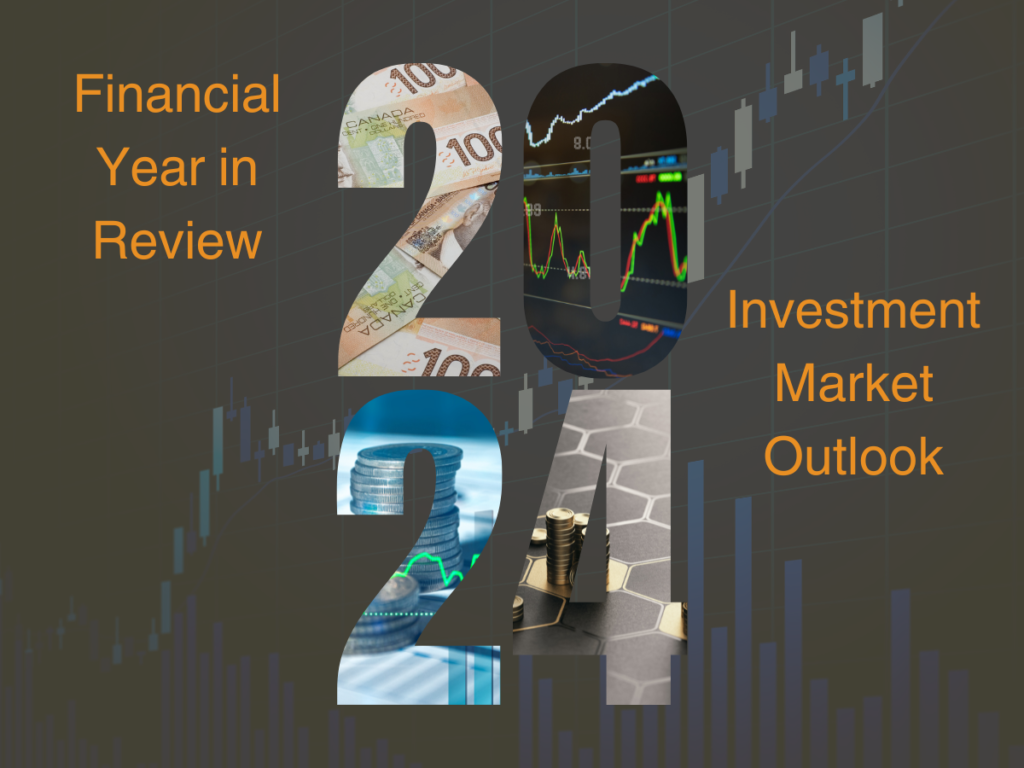
By Steve Lowrie, CFA
Special to Financial Independence Hub
You might assume, the more experienced a financial professional is, the more accurate they can be with their year-end forecasts. Personally, I’ve never tried to predict which hot or cold stocks, bonds, sectors, or market sentiments to chase or flee each year. Instead, the more experience I’ve gained, the more firmly I believe in the Timeless Financial Tips I shared throughout 2023. For me, they serve as the best guide for “predicting” what investors should expect in 2024.
So, considering everything I’ve learned in 2023 (plus the quarter-century prior), I predict …
We cannot possibly predict how 2024 markets will perform.
That’s my expert forecast, and I’m sticking to it. I will, however, add one more prediction, about which I am nearly as certain …
Over time (think multiple years), capital markets WILL deliver positive returns to those who consistently participate in their expected growth.
The 2023 Allure of 5% GIC Returns
If anything, 2023 offered fresh lessons on why it’s better to stick with the financial fundamentals and avoid the perils of market-timing.
As you may recall, we were still licking our 2022 wounds in January 2023, after experiencing an unusually perfect storm of negative annual returns from stocks AND bonds, along with continued high inflation. How unusual was 2022? I looked for the last time investors had experienced across-the-board negative annual returns, plus steep inflation and couldn’t find an example of this, at least in my career. 1994 was the last time both stock and bond returns were negative, however Canadian Inflation (CPI) was a scant 0.25% that year.
Given the 2022 backdrop, no wonder many investors were drawn to GICs and their alluring 5% interest rates in 2023.
It is true, GICs can be helpful for your rainy day funds and similar cash reserves that are awaiting their spending fate. But in 2023, I also saw people using (or, more accurately, abusing) this vehicle to sideline investable cash indefinitely, waiting for seemingly better days to jump into the market. Worse, some investors might have sold off portions of their existing investment portfolio to chase after GIC rates.
Safe Harbors can be a Risky Bet
Unfortunately, waiting for “better” markets before investing or reinvesting according to plan is still market-timing by any other name. And as I’ve covered before, market-timing ignores myriad investment fundamentals.
Among the most important insights to take to heart is how rapidly market tides can turn, leaving the unprepared out of luck. As one of my financial planning colleagues recently described:
“Small hinges swing big doors. [Market] Prices are brutish, irreverent, and unsympathetic to investors putzing about on the sidelines.” – Rubin Miller, Fortunes & Frictions
This message was on clear display in 2023. Talking about swinging markets! I’m willing to bet few, if any of us were expecting such strong annual returns for 2023, especially since most of the reward hinged on a year-end pop.
And yet, it shouldn’t really have come as such a big surprise. It’s exactly how global markets have repeatedly performed over time. It just seems as if investors forget this fundamental every time markets take a break from their historically uphill climb.
Theory aside, let’s look at some recent numbers. What would have happened in 2023 if you’d left $1,000,000 in those “safe” GICs, compared to investing it within a 60% stock/40% bond portfolio?
Instead of 5% turning your $1,000,000 into $1,050,000, your portfolio’s annual returns would have been a gratifying 10.92%*, yielding a gross $1,109,200*. Remember, these are both pre-tax returns. Given the superior tax efficiency of the 60/40 portfolio, the after-tax difference would have been even more significant.
Some of you might remember that at the end of 2022 and into 2023, various pundits predicted the permanent demise of the 60/40 portfolio. In my opinion, these pundits were succumbing to recency bias, specifically focusing on the recent poor performance of this strategy. However, this October 2022 article from Dimensional Fund Advisors, The 60/40 Portfolio: Down but Not Out, suggested that it might have been down but certainly not out:
“If history is any guide, there’s reason to believe the classic 60/40 portfolio is alive and well and could be poised to deliver healthy returns going forward.”
Near-Term News vs. Timeless Tips
Of course, it could easily have been otherwise. Markets could have continued to lag in 2023, leaving a 5% rate still seeming like a smart move.
However, this still disregards the inexorable math of it all. In fact, experience teaches us, they’re the more likely outcome. Plus, since the capital markets in which we invest have overall gone up rather than down over time, simple logic supports what historical evidence illustrates.

My New Year Prediction for Financial Markets Performance in 2024
This is exactly why I continue to advise against trying to time each market’s every move. This, and every year, there will be positions that will be more rewarding than a well-structured, globally diversified portfolio: for a while. There will be a whole lot of noise about current financial conditions. There will be endless predictions about what this noise tells us about the year ahead.
But across the years, the markets have a way of going about their business anyway, according to the timeless, evidence-based fundamentals we already know:
- Buy low when you have investable cash to do so.
- Sell high when your investment plan and personal goals warrant it.
- Rise above the noisy news by staying invested according to your financial plan.
I predict happier outcomes for those who take these timeless financial tips to heart. In that spirit, I wish you a warm and well-lived new year.
If you’d like to discuss the 2024 market outlook, reach out.
 Steve Lowrie holds the CFA designation and has 25 years of experience dealing with individual investors. Before creating Lowrie Financial in 2009, he worked at various Bay Street brokerage firms both as an advisor and in management. “I help investors ignore the Wall and Bay Street hype and hysteria, and focus on what’s best for themselves.” This blog originally appeared on his site on Jan. 11, 2024 and is republished here with permission.
Steve Lowrie holds the CFA designation and has 25 years of experience dealing with individual investors. Before creating Lowrie Financial in 2009, he worked at various Bay Street brokerage firms both as an advisor and in management. “I help investors ignore the Wall and Bay Street hype and hysteria, and focus on what’s best for themselves.” This blog originally appeared on his site on Jan. 11, 2024 and is republished here with permission.
*Calendar year 2023 returns of the globally diversified DFA Global 60/40 fund. https://www.dimensional.com/ca-en/funds/dfa605/global-60eq-40fi-portfolio-f
** This chart tracks the U.S. stock market (the S&P 500 Index), but we would expect to see similar data across global markets. Past performance is no guarantee of future results. Indices are not available for direct investment; therefore, their performance does not reflect the expenses associated with the management of an actual portfolio. In USD. Chart end date is June 30, 2023. Due to availability of data, monthly returns are used January 1926 through December 1989; daily returns are used January 1990 through present. Periods in which cumulative return from peak is –20% or lower and a recovery of 20% from trough has not yet occurred are considered Bear markets. Bull markets are subsequent rises following the bear market trough through the next recovery of at least 20%. The chart shows bear markets and bull markets, the number of months they lasted and the associated cumulative performance for each market period. Results for different time periods could differ from the results shown. A logarithmic scale is a nonlinear scale in which the numbers shown are a set distance along the axis and the increments are a power, or logarithm, of a base number. This allows data over a wide range of values to be displayed in a condensed way. Source: S&P data © 2023 S&P Dow Jones Indices LLC, a division of S&P Global. All rights reserved.
Share this:
- Click to share on X (Opens in new window) X
- Click to share on LinkedIn (Opens in new window) LinkedIn
- Click to share on Facebook (Opens in new window) Facebook
- Click to share on Reddit (Opens in new window) Reddit
- Click to email a link to a friend (Opens in new window) Email
- Click to print (Opens in new window) Print

